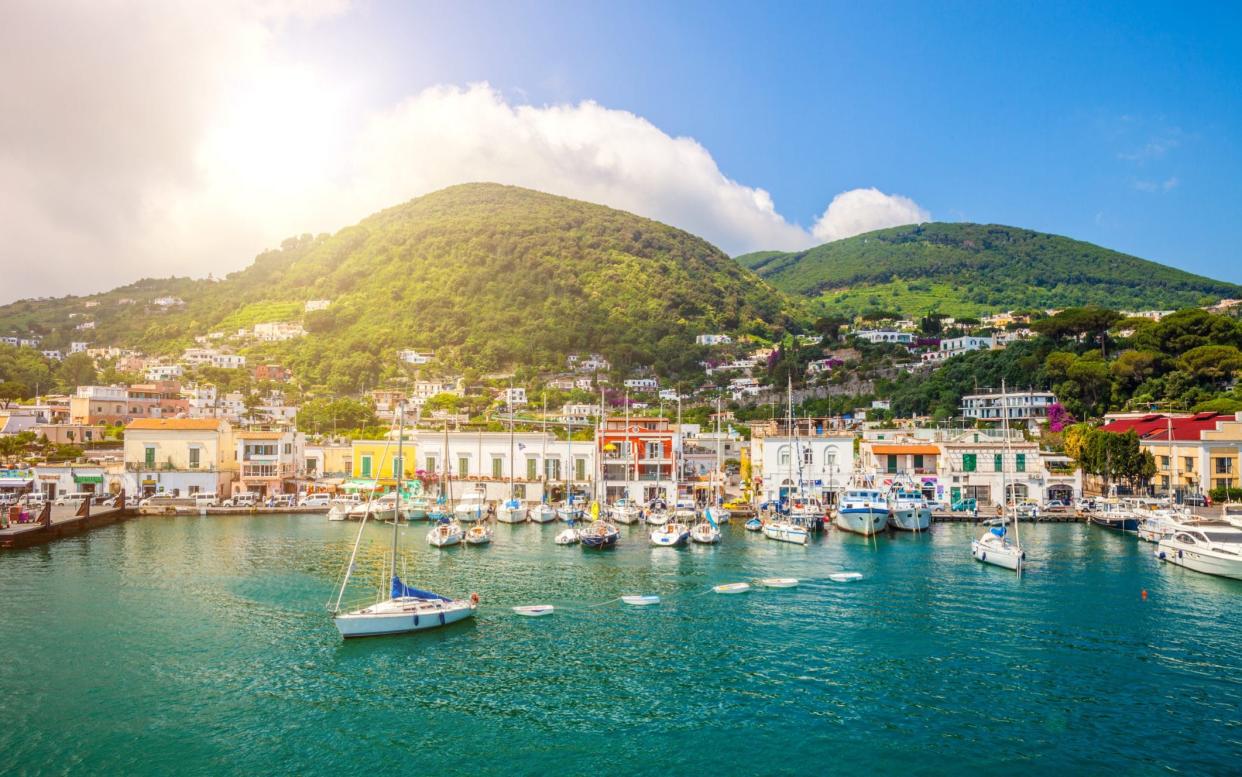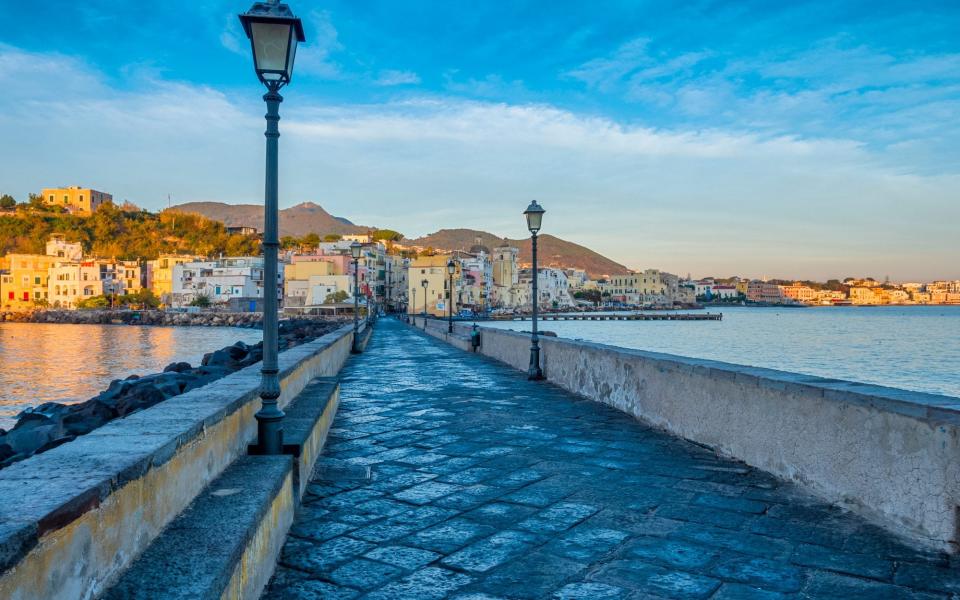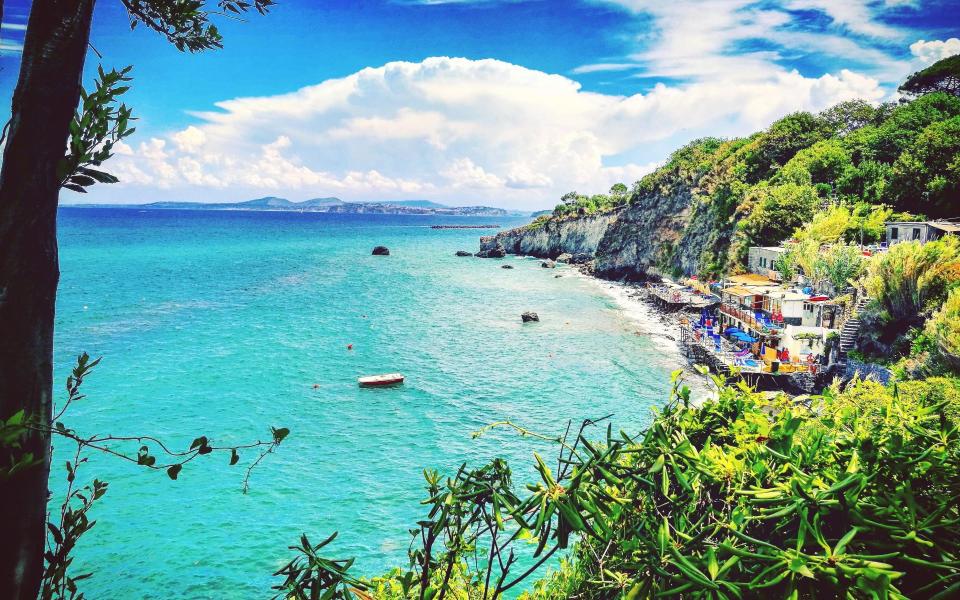The allures of Ischia, one of Italy's 'Covid-free' islands

A consort of Italian islands is pushing for their entire population to be vaccinated so they might welcome back visitors this summer. Hugh Morris remembers a visit to the Ischia, one such spot in the Bay of Naples, before the pandemic
It was my understanding that I had travelled to Ischia on the premise that no one else had beaten me to it, that this colourful splodge of volcanic rock in the Bay of Naples was as-yet undiscovered. After four days there I realised I was just incredibly out of the loop.
The Greeks, for one, certainly know where Ischia is. They rocked up here in the eighth century BC and, in a move that provoked geographic consternation in myself, founded their first colony. They must have heard the same rave reviews I had.
A long list of the great and the good have since followed to the surprisingly verdant outcrop: W H Auden, Lord Nelson, the Bourbons, Angela Merkel, Tennessee Williams, William Walton. Quite the mix. Even Giuseppe Garibaldi, biscuit muse and unifier of Italy, spent some time on this craggy isle, drawn to its turquoise shores by tales of the healing powers of its geothermal waters (he had a troublesome foot).
Anyhow, it felt best not to dwell, there was still much to discover. Ischia bustles with residential activity, but when it comes to holiday potential, currently lives in the shadows of its flash and famous cousins – Capri, a nod south-westwards, and the likes of Sorrento and the Amalfi Coast, in the same direction on the mainland. At the docks in Naples, the boat to Capri seemed at least three times as busy as our vessel.

We arrived wind-swept and sea-licked at the animated harbour of Ischia Porto, a scruffy strip of pastel-hued bars, restaurants and shops that cuts out a line on the coast before the island rises behind. The port is the north-east gateway to an island that is some six miles long and four wide, yet rises to 2,588ft at its centre in the form of Mount Epomeo.
Our accommodation, the Grand Hotel Excelsior Terme, a beautifully set 19th-century villa shrouded in greenery, yet an apple’s drop from the sea with its own private beach, sat halfway between Ischia Porto and Ischia Ponte. We left our bags and made for the Aragon Castle, on the far side of Ponte, a 15-minute stroll away.
As we navigated the passages that cling to the shore, marvelling at run-down facades and doorways that only the Italians could dress up as appealing, and weighing up our lunch options from the establishments propped up on stilts above the lapping waves, my companion told me that the 1999 film The Talented Mr Ripley was filmed here. I had not seen it which only made me feel even more out of the loop. Ahead, Aragon Castle sat atop a humongous cone of volcanic rock connected to the island by a fortified bridge. We clambered up the stronghold, first founded in 474BC by the Greek-Syracusan Hiero I, tracing the winding paths that chart the castle’s utility through the ages – fort, cathedral, prison – its mishmash of buildings and styles testament to its long history.
The next day the sun was nowhere to be seen, so we resolved to tackle Ischia’s lumpy heart and summit Mount Epomeo. To survive the climb, we first had to survive the drive. Before leaving Ischia Porto for the island’s ring road, 1,000 Fiats must squeeze through a hoop in the 16th-century Pilastri Aqueduct. It is a mystifying construction, evocative of an age when Roman engineering inspired the world, but today it sat in my peripheral vision as I edged my way under it and tried to hide the fact I was not a native motorist.

Safely through the arch, the road starts to whip and curl as Ischia rises. Cars textured with battle scars fling around tight corners, followed by lumbering lorries and whippet-like three-wheelers. I gripped the wheel hard and soared past beckoning vistas out towards the mainland, compact allotment vineyards and hotchpotch-chic half-hamlets.
We reached the village of Fontana and began the short, sharp stretch up to Epomeo. The mountain itself is the product of numerous eruptions, the landscape disrupted time and time again by tectonic violence below. As we climbed we passed fosse della neve, or snowholes, from which locals used to make a living collecting ice earned by the mountain’s altitude, which could then be sold on for medical or refreshment purposes.
The cloudy summit afforded us only fleeting glances of the panorama, so we wasted no time in settling at a table of the La Grotta Monte restaurant, a mountain institution cut into the rock. Ischia may be adrift from the mainland, but the quality of its cuisine is not; my wild rabbit spaghetti was wonderfully silky, thick and rich.
One of our final excursions was to enjoy one of the island’s most famous offerings. The Tears of Typhon are, according to Greek mythology, the product of his slaying by Zeus on the very spot where Ischia lies. He wept with fury over his treatment, and since then a whole industry has been built upon the waters that seep from the ground rich in minerals and as hot as 90C (194F).
We took the northern ring via the lively western town of Forio to the geothermal park of Poseidon, which boasts no less than 17 pools of varying temperature and purpose.

It was here I learnt superstar author Elena Ferrante had set one of her books, Story of the Lost Child, on Ischia. It was another clue to the island’s growing profile I had missed. I had, however, recently read Robert Harris’ Pompeii, which makes no mention of Ischia, but drew my mind to the immense power fuelling Poseidon’s supposedly healing waters.
I was bathing in water heated by the same source that 2,000 years ago disturbed the mighty Vesuvius, a volcano that lurks in many a view from Ischia. I felt small and vulnerable, but at the same time luxurious and decadent.
I was soon stripped of this smugness by indulging in one of the Kneipp treatments – two adjacent pools, one 15C/59F (too cold), one 40C/104F (too hot). The idea is to start with the hot and end on the cold, giving your body such an unpleasant shock that it promises from there on in to work harder on circulation.
The next day, on leaving for Naples, our taxi driver mentioned in passing that it was on Ischia that news broke of Elizabeth Taylor’s scandalous affair with Richard Burton, as they were here filming Cleopatra. Of course, it was; Ischia, Italy’s worst kept secret. At least I too was now in the know.
The essentials
All overseas travel is currently banned by the UK Government until at earliest, May 17.
Kuoni (01306 747008; kuoni.co.uk) offers five nights B&B at Grand Hotel Excelsior Terme, including British Airways flights to Naples from London Gatwick and transfers, from £1,193 per person based on two sharing, departing October 2021.

